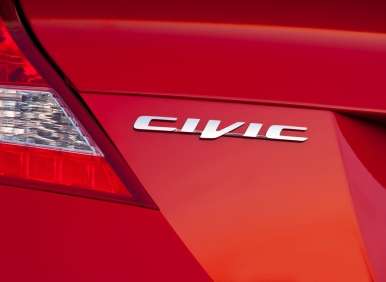Recent Articles
Popular Makes
Body Types
All-new Honda Civic Already Slated for Refreshing
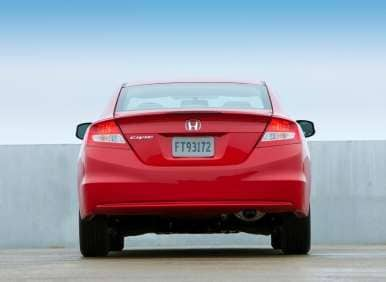
In news that probably surprises very few critics, the current Honda Civic—which was completely redesigned for the current model year—will see significant updates for the next one. It’s a tacit admission of how the 2012 Civic has fallen short of its goals even as Honda, and the car’s growing sales numbers, continue to indicate otherwise.
It’s Not Us, It’s Them
While doing this kind of emergency fix on a brand-new vehicle isn’t unheard of, it’s usually limited to cases such as the first-gen Subaru Tribeca, in which the initial design was an utter flop with customers. I can’t remember the last time it happened to a mass-market high-volume seller like the Civic. And anyway, Honda says it isn’t sprucing up the Civic because there’s anything wrong with today’s vehicle per se, but to widen the gap between the car and its increasingly competitive compact rivals.
Of course, that reasoning flies in the face of most reviews of the 2012 Civic, including that of Consumer Reports. As readers may remember, CR dropped the new Civic from its list of recommended vehicles, with editors noting that the car “Feels insubstantial with a cheap interior,” and that “the problems that really hurt the Civic’s score run deeper and they showed up at our test track. Stopping distances are long. The steering is lightly weighted and comes up short on feedback. Body lean appears early in the corners. The ride is marred by frequent short pitches. And road noise still remains an annoying companion.”
I didn’t find things quite so dismal when I drove a 2012 Civic coupe earlier this fall, but did note some surprising lapses in build quality and attention to detail. Further, although it does provide nice EPA ratings, the Civic’s powertrain offers five-speed transmissions—not the six cogs available in all other next-gen compacts—and has yet to adopt other technologies that are rapidly migrating throughout the industry, like direct injection and turbocharging. In my opinion, the fact that Honda is trailing its rivals in what used to be one of its strongest suits—vehicle engineering—is THE key indicator of how far the automaker has fallen.
Yet I also projected that the Civic’s reputation and sales inertia would likely keep it at the head of the pack in terms of volume. And that is exactly what seems to have happened.
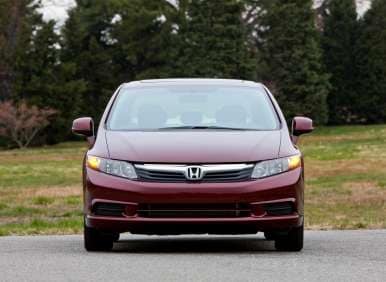
Civic: Still the No. 1 Compact in America
Sales of the Civic are down a significant 13.8 percent through November, but Honda says that’s primarily due to production issues arising out of the spring earthquake/tsunami in Japan and more recent flooding in Thailand. But volume has increased on a month-over-month basis for three consecutive months now, and by the end of November, the Civic had finally earned its first year-over-year volume increase since May. It’s also reclaimed its position as the top seller in its segment in October, and kept that title in November.
What’s particularly interesting—and perhaps evidence of the Civic’s still strong reputation—is that the rivals that seems to be bearing the brunt of the Honda’s resurgence are the Chevy Cruze and Ford Focus. That duo’s respective sales volumes have moved down in virtual lockstep with the increases realized by the Civic since August. You know, about the same time production of the new Civic began approaching full capacity.
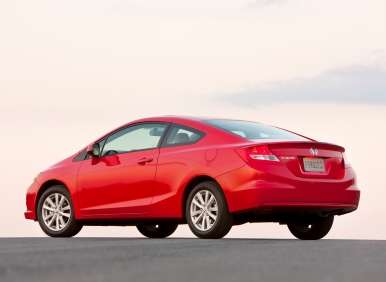
Turning Down the Volume
Now, what Honda says about the increasing quality of the Civic’s compact rivals is no doubt true. There are a lot of all-new entries in the segment, including not only the Cruze and Focus, but also the VW Jetta and Hyundai Elantra, and these are some high-quality rides that are soaking up substantial numbers of customers. Sales of the Cruze, Jetta and Elantra were up 64.1 percent, 35.5 percent and 43.8 percent, respectively, in November. (The Focus saw nearly 10 percent of its November volume evaporate between 2010 and 2011, and is a different story for a different day.)
With this kind of competition, even if the 2012 Civic had enjoyed a flawless launch and sterling reviews, and was kitted out with all the latest technologies, it’s hard to imagine that the car would be in a different place in the market then it’s in right now. Which, at the risk of assaulting a deceased equine, is at the top of the segment’s sales chart.
The natural disasters and third-party criticism didn’t help, but the primary driver of the Civic’s current sales results is a trend I’ve been following for some time. The quality and sophistication of mainstream vehicles are approaching parity at a faster rate than that at which the pool of available customers is increasing. Thus, my thinking here is that sales volumes will, in most cases, converge as well; i.e., cars like the Civic may remain sales leaders, but their leads will be a lot less than in the past, and so will their growth rates.
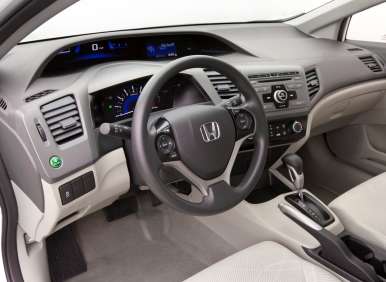
Honda’s Goal: Raise Sales by 24 Percent
On the other hand, that doesn’t mean Honda won’t be able to hit its target of raising sales by 24 percent in 2012, something that rebooting the Civic is supposed to help accomplish. Just note that the bar is set pretty low, since Honda will almost certainly finish this year with fewer sales than in 2010, and is underperforming the industry by close to 16 percent. The market as a whole is up by 10.4 percent as compared to last year, while the automaker’s sales are down 5.3 percent.
A full year of the all-new Civic and Honda CR-V, in addition to the launch of the redesigned Honda Accord—regardless of reviews—should change that.
